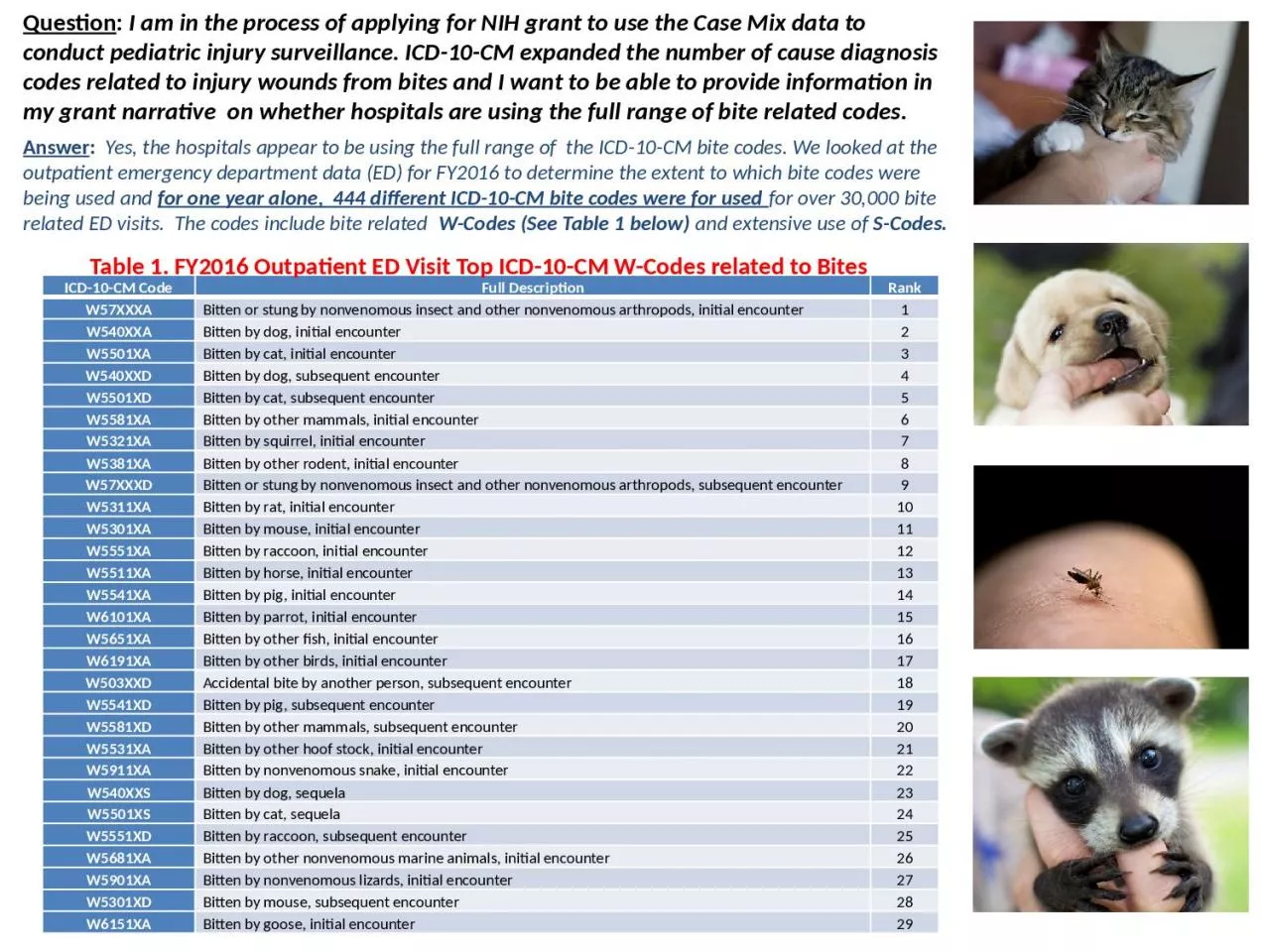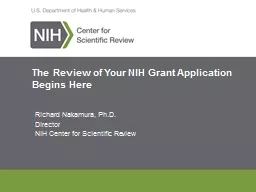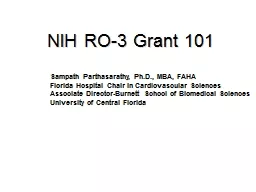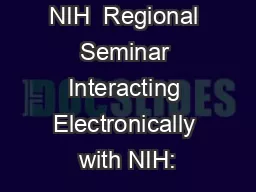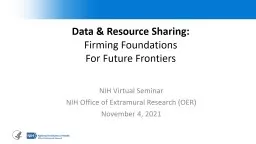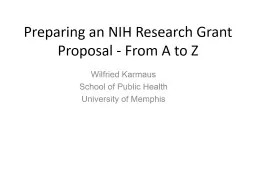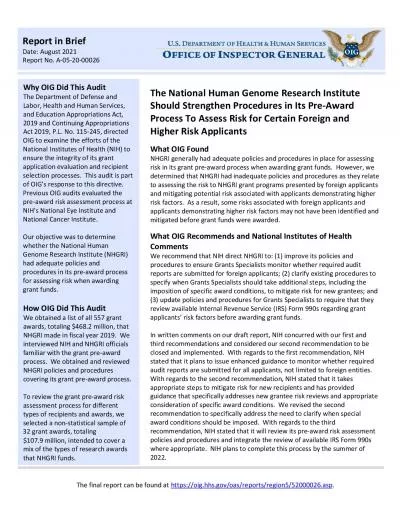PPT-Question : I am in the process of applying for NIH grant to use the Case Mix data to
Author : Thunderbolt | Published Date : 2022-07-27
Answer Yes the hospitals appear to be using the full range of the ICD10CM bite codes We looked at the outpatient emergency department data ED for FY2016 to determine
Presentation Embed Code
Download Presentation
Download Presentation The PPT/PDF document "Question : I am in the process of apply..." is the property of its rightful owner. Permission is granted to download and print the materials on this website for personal, non-commercial use only, and to display it on your personal computer provided you do not modify the materials and that you retain all copyright notices contained in the materials. By downloading content from our website, you accept the terms of this agreement.
Question : I am in the process of applying for NIH grant to use the Case Mix data to: Transcript
Download Rules Of Document
"Question : I am in the process of applying for NIH grant to use the Case Mix data to"The content belongs to its owner. You may download and print it for personal use, without modification, and keep all copyright notices. By downloading, you agree to these terms.
Related Documents

